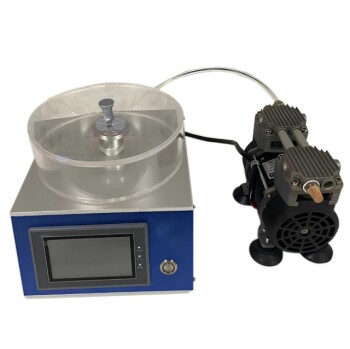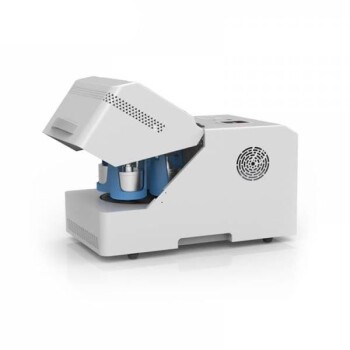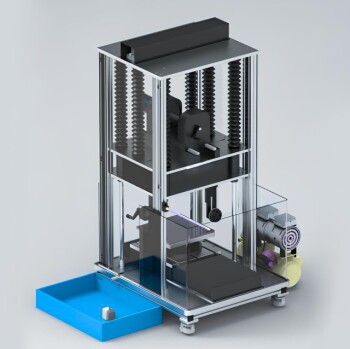In the tyre and rubber industry, the circular economy is a model designed to eliminate waste and maximize the value of resources. Instead of the traditional linear path of "take-make-dispose," it creates a closed-loop system where end-of-life tyres (ELTs) are systematically collected and transformed into valuable new products, materials, or energy. This approach treats used tyres not as waste, but as a crucial feedstock for new industrial processes.
The core principle is to move beyond simple disposal and implement a strategic hierarchy of use. This hierarchy prioritizes extending a tyre's life through reuse and retreading, followed by high-value material recycling, and finally, energy or chemical recovery, ensuring nothing is wasted.
The Problem: The Linear Tyre Economy
The traditional model for tyres poses significant environmental and economic challenges. Understanding this context is key to appreciating the shift to a circular model.
### The Scale of Tyre Waste
Globally, over a billion tyres reach the end of their useful life each year. This creates a massive and continuous stream of waste material that is bulky and non-biodegradable.
### Environmental Hazards
Improperly discarded tyres are a serious environmental risk. Stockpiled tyres can become breeding grounds for pests and pose a significant fire hazard, releasing toxic pollutants into the air, soil, and water.
### Wasted Resources
A tyre is a highly engineered product made from valuable raw materials, including natural and synthetic rubber, steel, and textiles. Landfilling or simply discarding them represents a complete loss of these embedded resources and the energy used to produce them.
The Hierarchy of Tyre Circularity
A successful circular economy for tyres is not a single process but a prioritized sequence of actions, often referred to as the "4R" model: Reduce, Reuse, Recycle, and Recover.
### 1. Reduce: Extending Tyre Lifespan
The most effective way to manage waste is to prevent it. In the context of tyres, this involves maximizing their service life on the vehicle.
This is achieved through proper tyre maintenance, such as maintaining correct inflation pressure, regular wheel alignment, and responsible driving habits, all of which slow down tread wear.
### 2. Reuse: The Role of Retreading
Retreading is a prime example of high-value reuse. A structurally sound but worn tyre casing can have a new tread applied, effectively creating a new tyre.
This process uses significantly less oil, water, and energy than manufacturing a new tyre from scratch. It is a well-established and vital practice, especially in the commercial trucking industry.
### 3. Recycle: Material and Mechanical Recovery
When a tyre can no longer be safely reused, the next best step is to recycle its constituent materials.
Mechanical recycling involves shredding tyres and separating the rubber, steel, and textile components. The most common methods are:
- Ambient Grinding: Shredding and grinding at room temperature to produce rubber crumb.
- Cryogenic Grinding: Using liquid nitrogen to freeze and shatter the rubber, producing a finer, cleaner crumb.
This recycled rubber is then used in applications like rubberized asphalt for roads, playground surfaces, sports tracks, and moulded rubber products.
### 4. Recover: Chemical and Energy Value
This is the final tier for tyres that cannot be recycled mechanically. Recovery focuses on extracting the chemical or energy value from the material.
The two primary methods are:
- Pyrolysis: A chemical recycling process that heats shredded tyres in an oxygen-free environment. This breaks them down into their core components: recovered carbon black (rCB), steel, and tyre-derived oil (TDO). These can be used as raw materials in new manufacturing.
- Tyre-Derived Fuel (TDF): Shredded tyres are used as a high-energy fuel source, often in cement kilns or industrial boilers. While this recovers energy, it is considered a lower-value circular application because the material itself is consumed.
Understanding the Trade-offs and Challenges
Transitioning to a fully circular model is not without its difficulties. Acknowledging these challenges is crucial for building a resilient system.
### Economic Viability
The cost of collecting, transporting, and processing ELTs can be high. The market price for recycled materials, like rubber crumb or recovered carbon black, can fluctuate, impacting the profitability of recycling operations.
### Market Creation
The entire system depends on stable, long-term demand for products made from recycled tyre materials. Without robust end markets, collected tyres have nowhere to go, causing the circular model to fail.
### Technical Complexity
Tyres are complex composite products, making the clean separation of rubber, steel, and fibres challenging. Contamination can reduce the quality and value of the final recycled materials.
### Regulatory Landscape
Inconsistent regulations regarding waste management, collection schemes, and the definition of "end-of-waste" status can create uncertainty and hinder investment across different regions.
Making the Right Choice for Your Goal
The best approach within the circular economy depends on your specific objectives, whether they are environmental, economic, or industrial.
- If your primary focus is maximizing environmental impact: Prioritize extending tyre life through maintenance and supporting the retreading industry, followed by material recycling into long-lasting infrastructure like roads and playgrounds.
- If your primary focus is on economic innovation: Investigate advanced technologies like pyrolysis, which transforms tyre waste into high-value commodities like rCB and TDO, creating new revenue streams from old materials.
- If your primary focus is on industrial efficiency: Consider the use of Tyre-Derived Fuel (TDF) as a cost-effective and energy-rich alternative to traditional fossil fuels, particularly in energy-intensive industries like cement manufacturing.
Ultimately, the circular economy provides a powerful framework for transforming the tyre industry from a source of waste into a sustainable source of value.
Summary Table:
| Circular Economy Step | Key Process | Output/Application |
|---|---|---|
| Reduce | Tyre Maintenance | Extended Lifespan |
| Reuse | Retreading | Like-New Tyres |
| Recycle | Mechanical Grinding | Rubber Crumb (Asphalt, Surfaces) |
| Recover | Pyrolysis / TDF | rCB, Oil, Energy |
Ready to integrate circular economy principles into your operations?
KINTEK specializes in providing robust laboratory equipment and consumables essential for researching and developing advanced tyre recycling processes, such as pyrolysis and material analysis. Whether you are innovating in material recovery, quality control, or process optimization, our solutions support your sustainability goals.
Contact us today to discuss how we can equip your lab for a greener future. Get in touch via our contact form.
Related Products
- Powerful Plastic Crusher Machine
- Benchtop Laboratory Homogenizer Mixer with 4 Inch Acrylic Cavity
- HFCVD Machine System Equipment for Drawing Die Nano-Diamond Coating
- Lab Plastic PVC Calender Stretch Film Casting Machine for Film Testing
- Benchtop Laboratory Homogenizer Mixer with 4 Inch Aluminum Alloy Chamber
People Also Ask
- What is a particle pulverizer? A Guide to Controlled Size Reduction for Materials
- Where are hammer mills used? From Agriculture to Recycling, a Versatile Size-Reduction Solution
- What is use for grinding in the laboratory? Select the Right Mill for Accurate Sample Prep
- What is an example of pulverized? From Crushing Rocks to Winning Debates
- What is the two roll mill mixing process? Master Polymer Compounding with High Shear




















